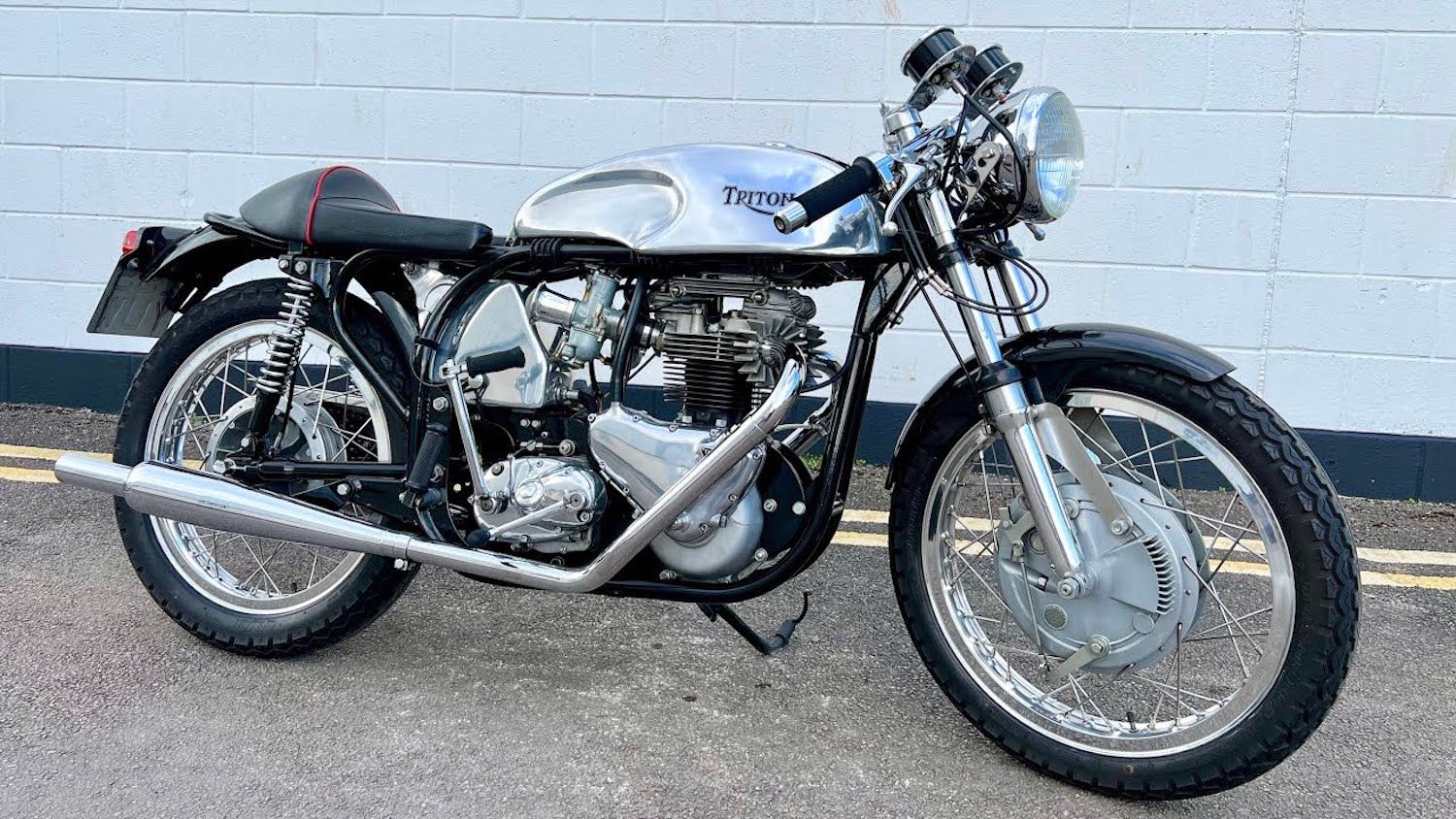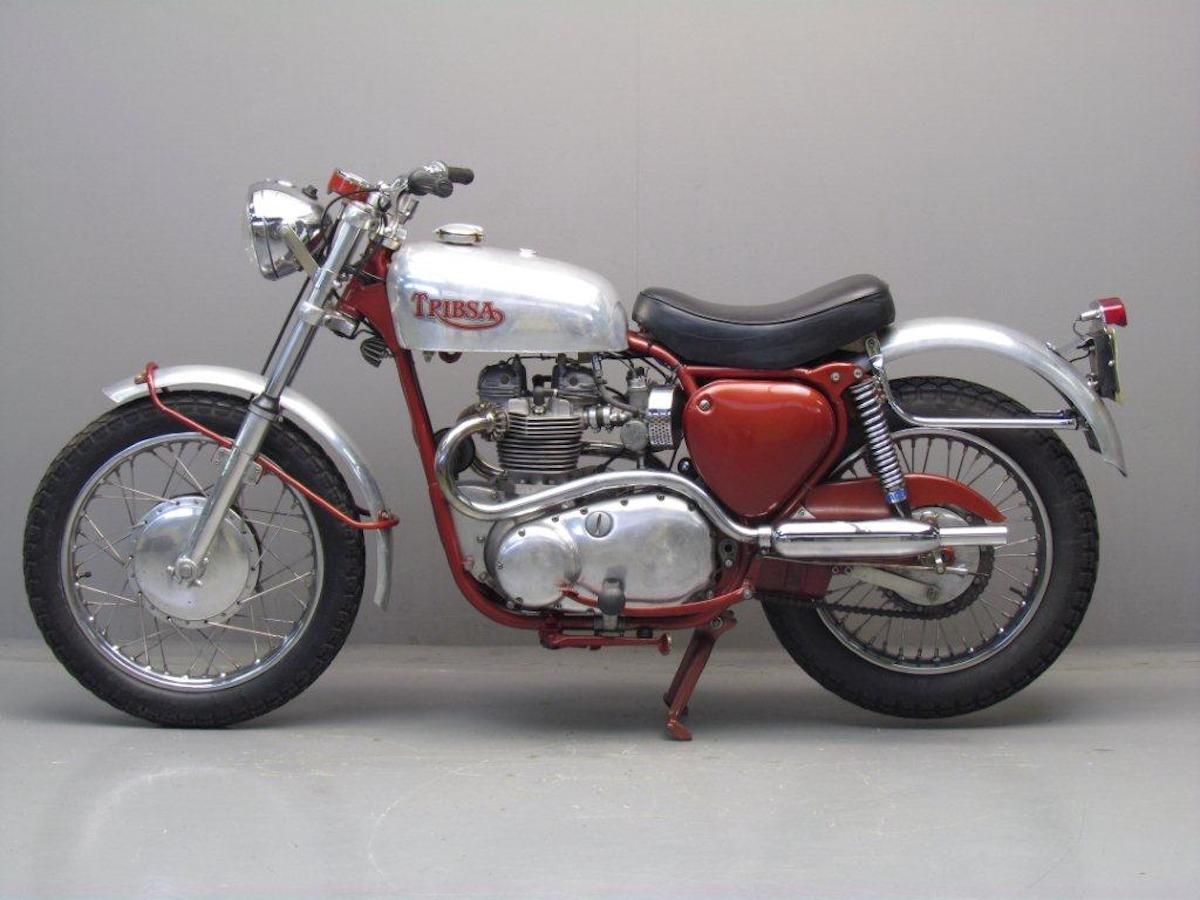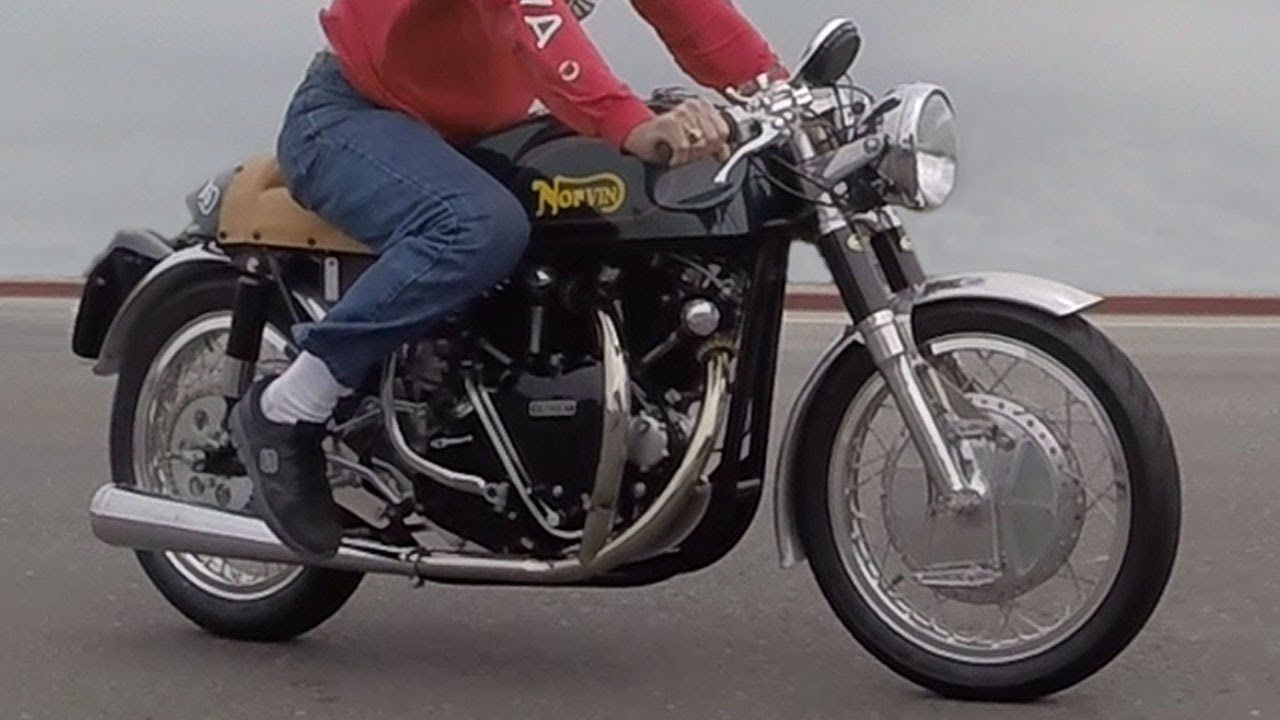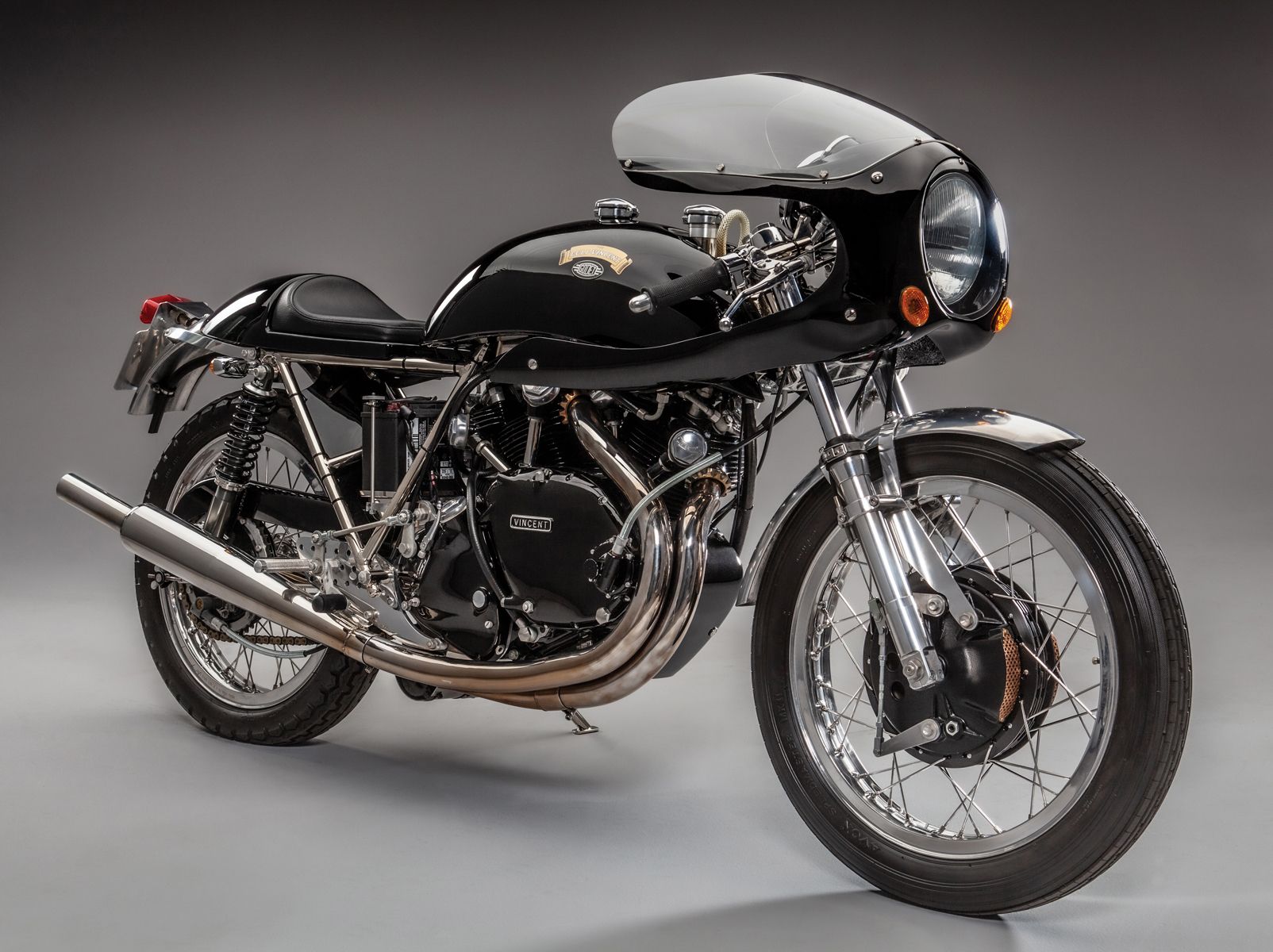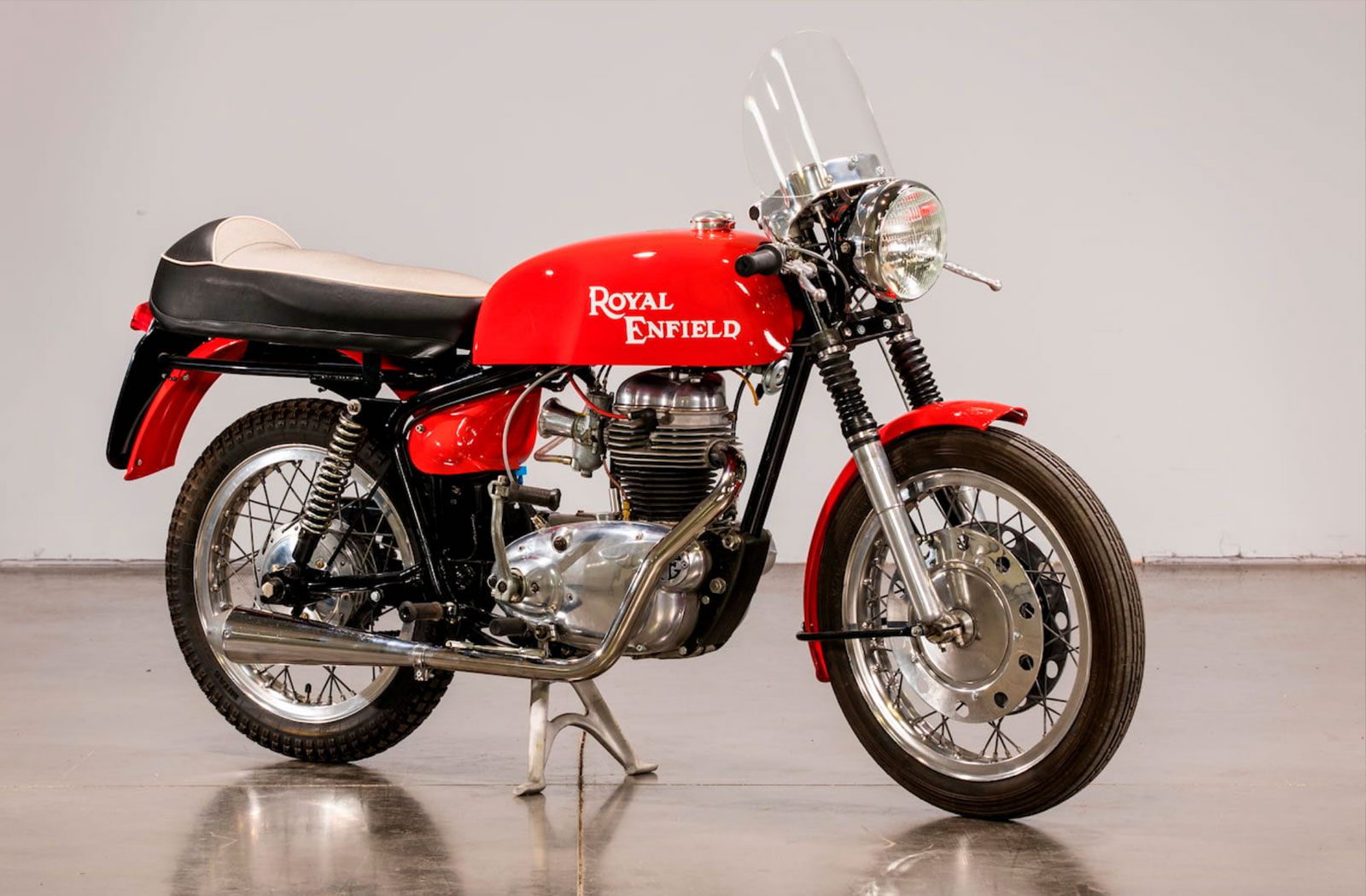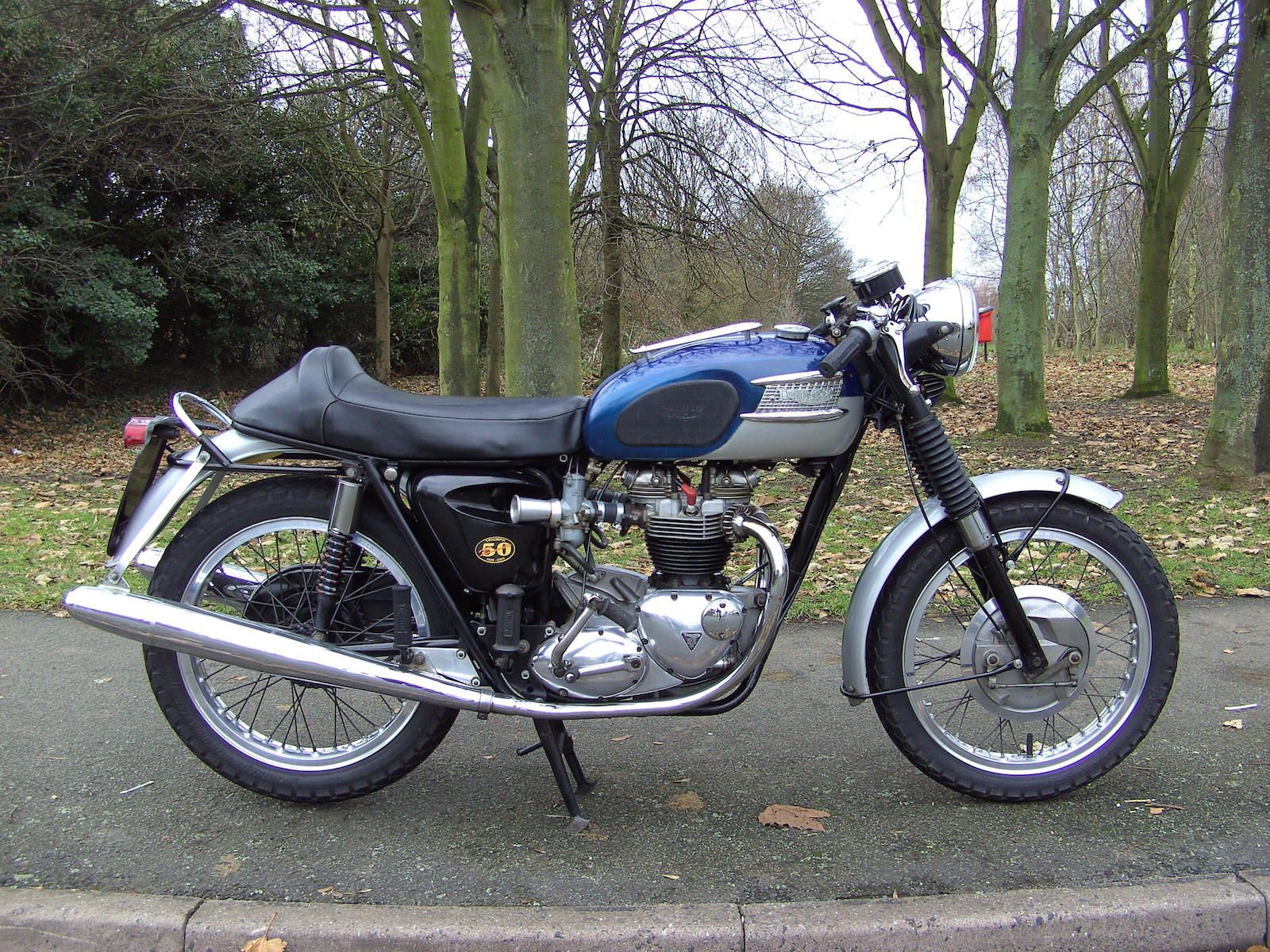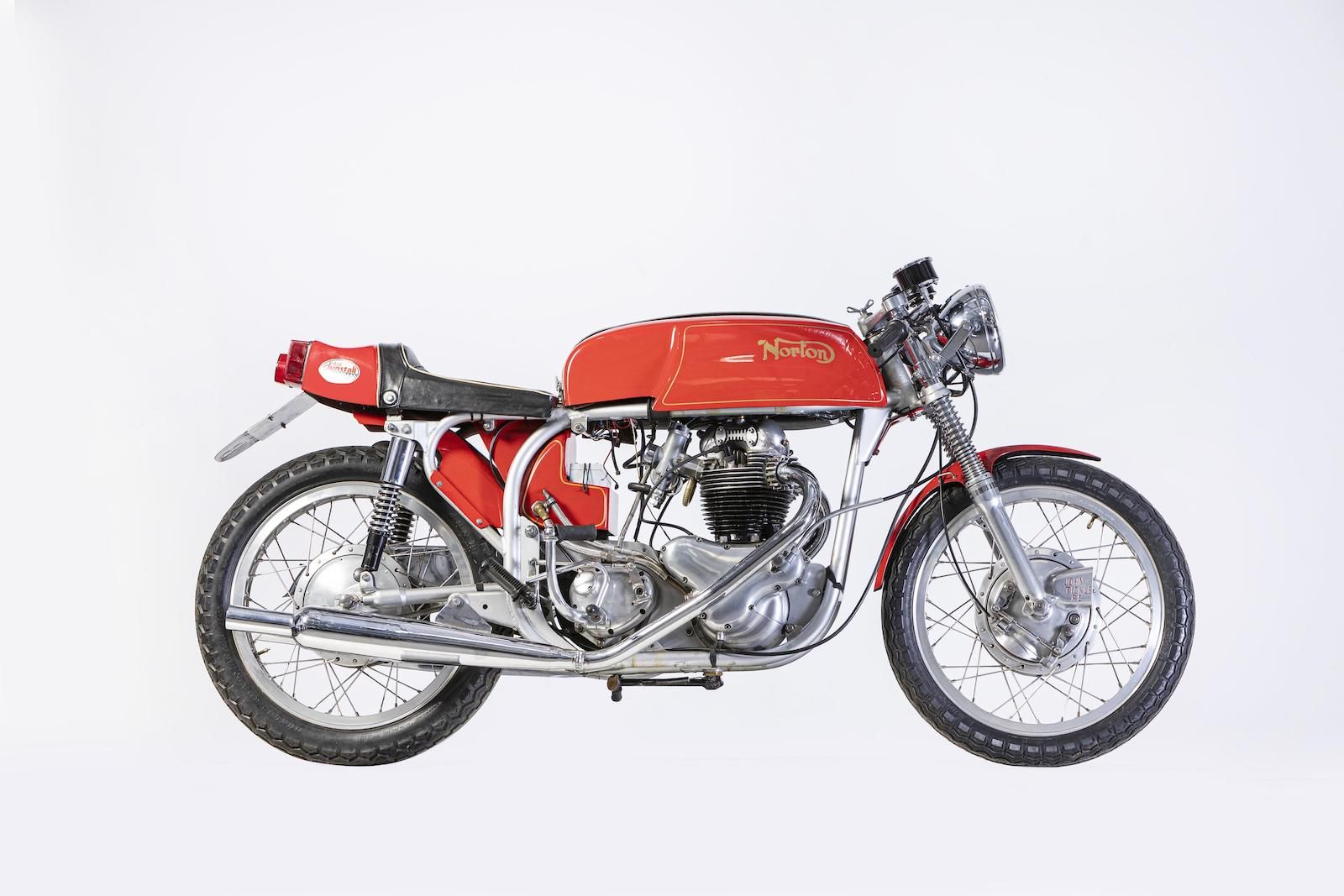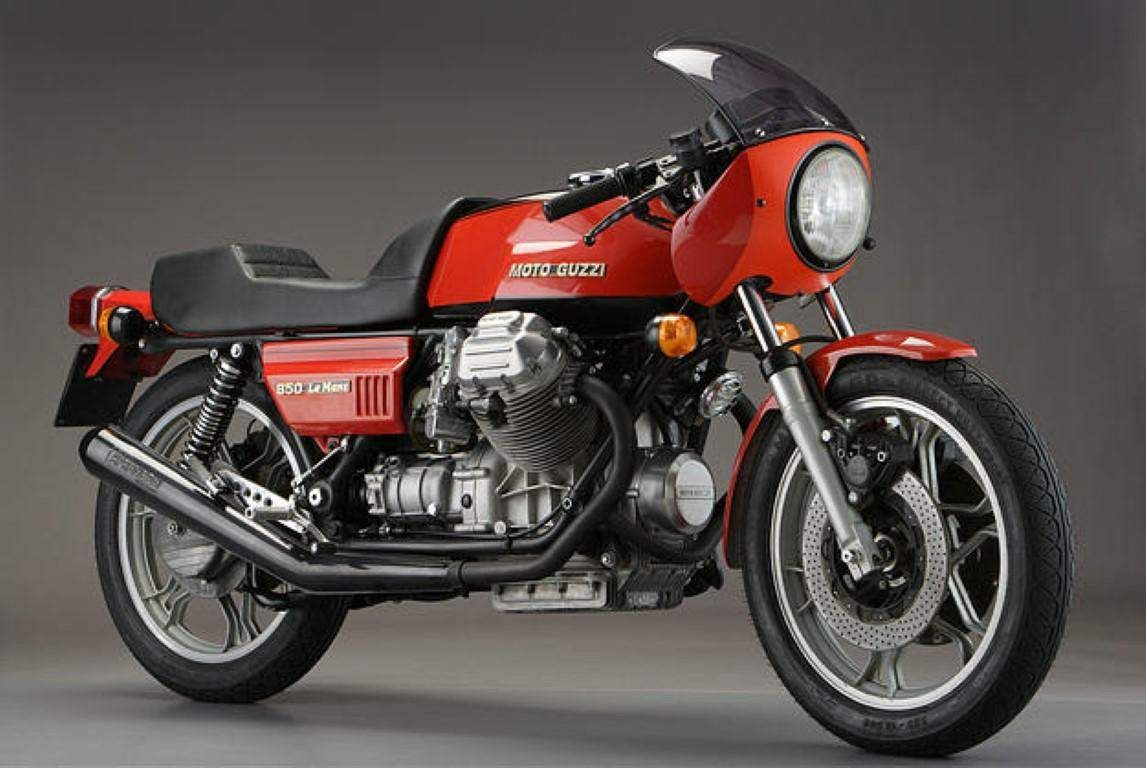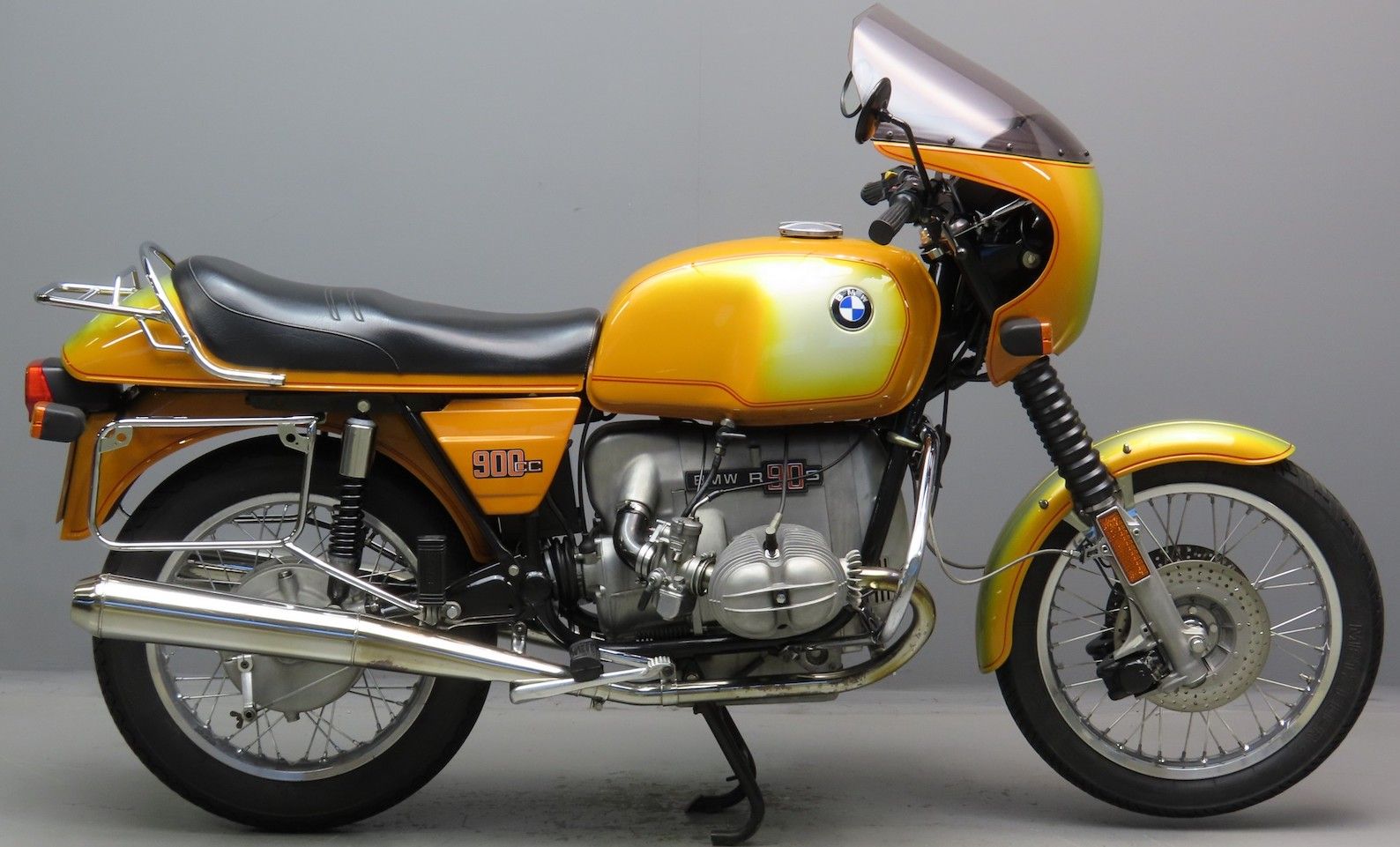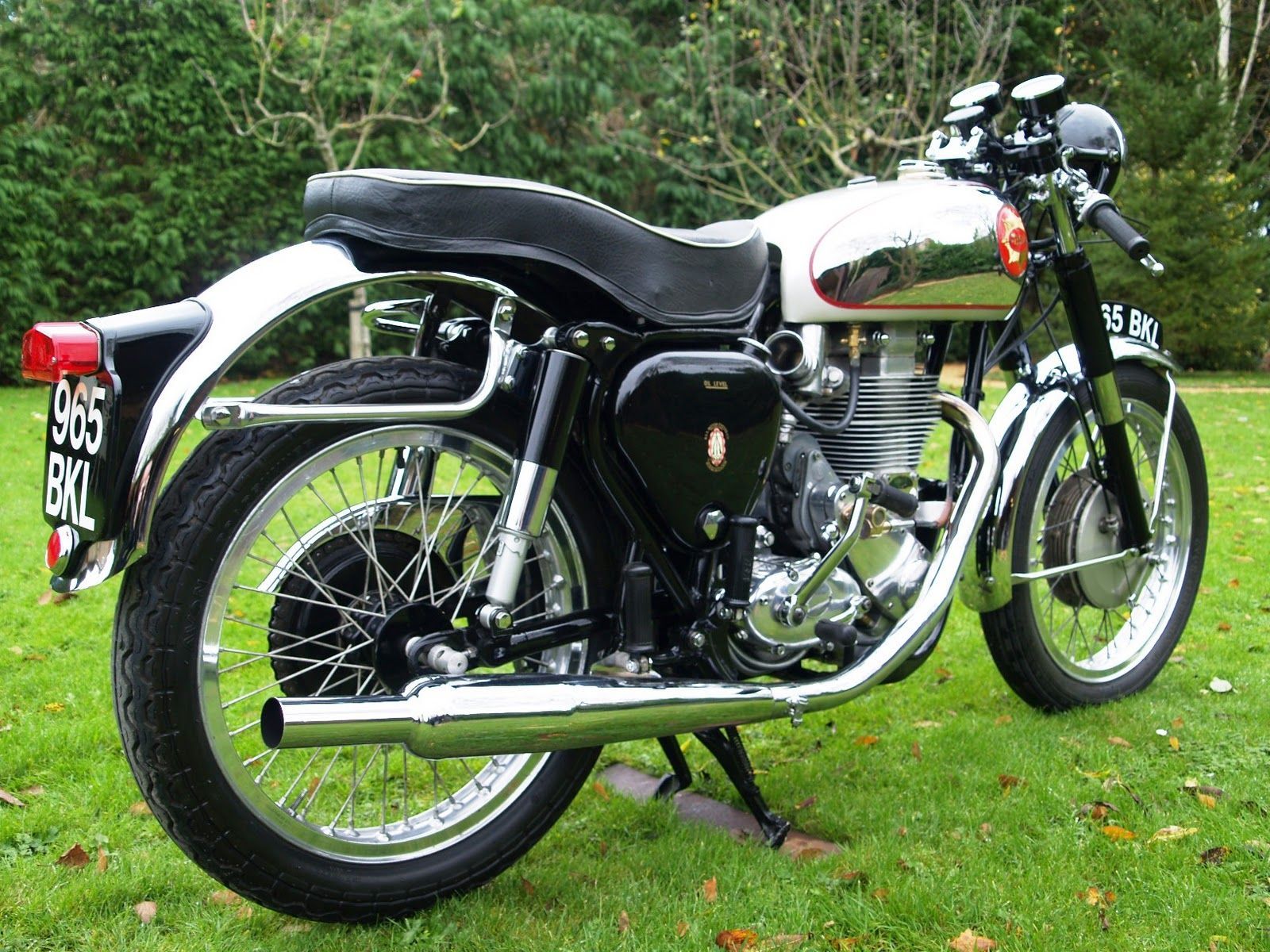The café racer motorcycle has traditionally been the product of the home mechanic, working away in a garage to convert their road bike into a race replica by fitting clip-on handlebars, rear-set foot pegs, a single seat and, perhaps, a bikini fairing. Early examples married the engine from one make of bike to the chassis of another – the best of both worlds – before some manufacturers jumped on the bandwagon and launched production café racers. The modern-day craze for café racers has its origins in a combination of both home-built and factory production versions and what follows is a list of those motorcycles that started the whole affair.
10 Triton
In the post-war years, it was widely acknowledged that the Norton, with its twin-shock ‘featherbed’ frame and Roadholder forks, was the best handling motorcycle available, while Triumph built the fastest engines. At the time, 500cc Formula 3 car racing was hugely popular and the engine of choice was the overhead camshaft Norton single cylinder racing engine, as found in the Manx Norton. But Norton wouldn’t sell just the engine, so car builders such as Cooper had to buy complete Manx Nortons for the engine, selling off the rest of the rolling chassis, into which enthusiasts put alternative engines. The frame and forks were also to be found on production Norton road bikes and many of these were also converted into café racers.
9 TriBsa
If the marriage of Norton frame and Triumph engine was called the Triton (TRIumph/norTON), then it doesn’t take too much of a stretch of the imagination to come up with Tribsa, which is a marriage of Triumph and BSA frames and engines. In those days, swapping one engine for another wasn’t too difficult as engines were never a structural part of the motorcycle, so a set of dedicated engine plates would enable a BSA engine to be fitted into a Triumph frame and vice versa. It wasn’t particularly that the Triumph engine was better than the BSA’s, or that either frame was better than the other, but necessity is the mother of invention and there were many hybrids that emerged in the heyday of the rocker and the café racer.
8 Norvin
If it seems like sacrilege to butcher a Vincent for its engine and shoe-horn it into a Norton featherbed frame, then you have to remember that, in the 1960s, a Vincent was just another old motorcycle, albeit a very good one, and hadn’t yet attained the classic status it enjoys today (along with the sky-high values). It really was a tight fit and the engine seemingly filled every last cubic inch of space but, when done right, the Norvin was a fearsome beast, the chassis just about able to contain the performance. Even then, Vincents were relatively rare, so there won’t have been too many Norvins knocking around which will have only cemented their reputation as the fastest café racers of the time.
7 Egli Vincent
Fritz Egli was a motorcycle racer who turned to building bespoke motorcycle frames in 1965, much as Bimota started doing in the early 1970s. One of his first projects was to build an alternative frame for the Vincent, addressing known problems with the original and bringing up to date the front and rear suspension, while still using the engine as a stressed member of the frame. On his home-built Vincent special, Egli won the Swiss Hill Climb Championship in 1968 and he would go on to build frames for all the Japanese manufacturers’ products for private individuals. An Egli Vincent was the gold standard of café racers.
6 Royal Enfield Continental
The true ancestor of the modern production café racer, in that the Royal Enfield Continental 250GT was the first café racer to be available brand new from a manufacturer. Launched in 1965, it used existing mechanicals, which included a single cylinder 250cc engine, swept-back exhaust header, rear sets, red fiberglass gas tank with quick-release cap, twin clocks, cooling discs around the front drum brake and an optional fairing. The fact that it was only 250cc was actually a bonus as, at the time, a learner rider could ride a machine of 250cc, so it opened up a huge market of young men who wanted to look cool while learning to ride, not to mention being economical and fun to ride.
5 Triumph Thruxton Bonneville
Unlike Norton, Triumph never officially partook in racing activities, boss Edward Turner realizing that machines developed solely for racing often had little to do with production models and, even if they won, were an expensive distraction from the business of selling motorcycles. That didn’t stop the factory offering mildly modified models for sale to a sport-hungry public and the Thruxton Bonneville was one such. The factory officially built 52 for homologation for production racing, of which Turner approved as it had direct benefits to sales, but many more were built up from kits the factory sold to dealers and owners alike. Most changes were inside the engine for more power but, externally, the Thruxton also looked like the archetypal café racer.
4 Norton Dunstall
Paul Dunstall was an enterprising motorcycle racer and mechanic who saw an opportunity in the 1960s to offer over-the-counter tuning parts for the British motorcycles of the time, concentrating mainly on Norton, but also modifying Triumph and BSA models. In the Dunstall catalogue was a range of speed parts, race-style accessories as well as complete, ready-modified bikes. Early bikes were based on the Norton Dominator models, which later changed to Commando-based models when that bike appeared. They were more than simply road-going café racers as they were sold in sufficient numbers to be eligible for production racing series.
3 Moto Guzzi Le Mans 850
Even though Japanese sports bikes were ruling the motorcycling world in the mid-1970s, the majority of the models were roadsters with no pretense at being race replicas which is, in effect, what café racers were. Then Moto Guzzi released the Le Mans 850, complete with clip-on handlebars and a bikini fairing. The transverse V-Twin engine produced 80 horsepower and 57 foot pounds of torque, driving the rear wheel via shaft, the layout offered more ground clearance when cornering than the equivalent BMW, the R90S (see below), while the chassis offered much better handling than contemporary Japanese ‘sports’ bikes. Later models became more sports tourers, which is why the original is highly sought after.
2 BMW R90S
If BMW blindsided the opposition with the S 1000 RR superbike, then it wasn’t the first time the German company had surprised the motorcycling world. Back in the 1970s, BMW’s reputation was forged by rather staid but beautifully built – and expensive – roadsters and touring bikes but, in 1973, the company surprised everyone with the launch of the R90S, which was not only café racer in style, complete with clip-on handlebars and a bikini fairing, but had bright, two-tone paint jobs which was a complete departure for BMW. It even had racing success behind it, as BMW R90Ss finished first and second at the very first AMA Superbike race at the Daytona International Speedway in 1976.
1 BSA Gold Star
Along with the Norton Manx, the BSA Gold Star was the template from which the style of the café racer was born. The British racing motorcycles of the late 1940s and 1950s were what every red-blooded teenage boy lusted after and, if they were financially out-of-reach, then the style was easily replicated: single seat with bum-stop hump, low and narrow clip-on handlebars, forcing the rider forward and down, large chrome-shelled headlight, swept back exhaust header and foot pegs moved backwards. If you were feeling really flush, then an after-market gas tank in bare aluminum was just the ticket: the bikes looked fast and, if you were lucky, it was.
Source
https://www.topspeed.com/classic-cafe-racers-that-inspired-the-modern-trend/


